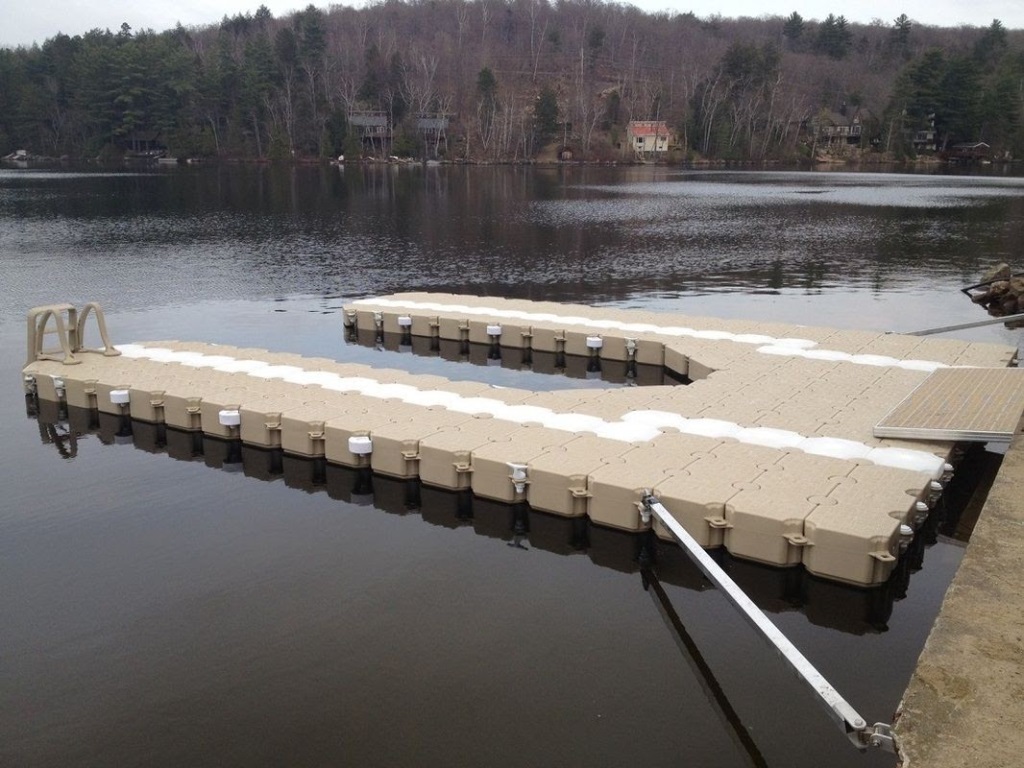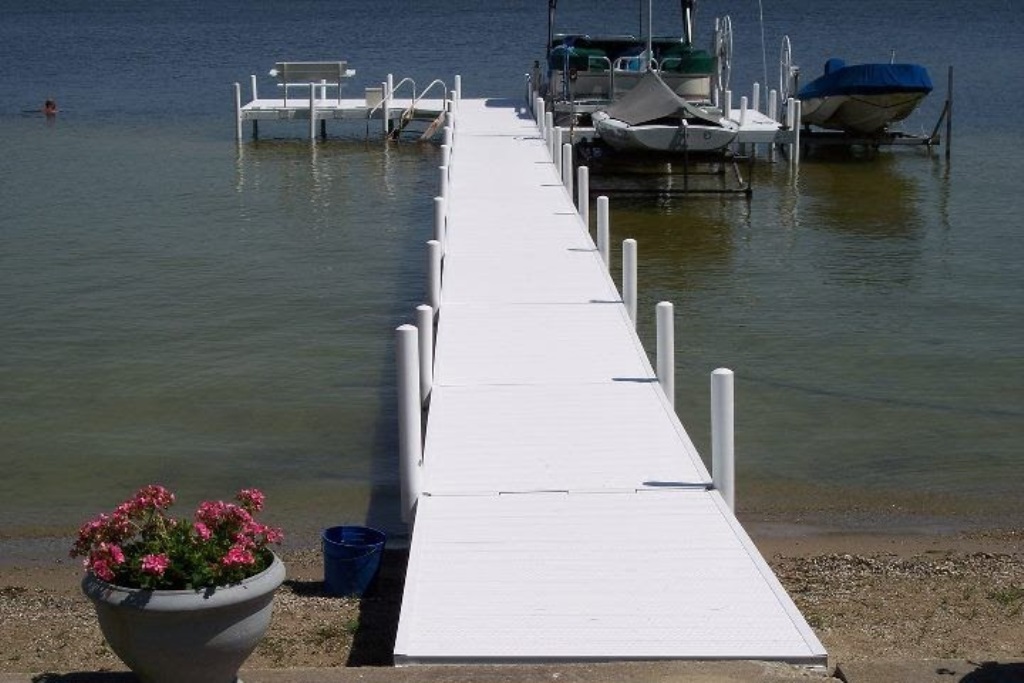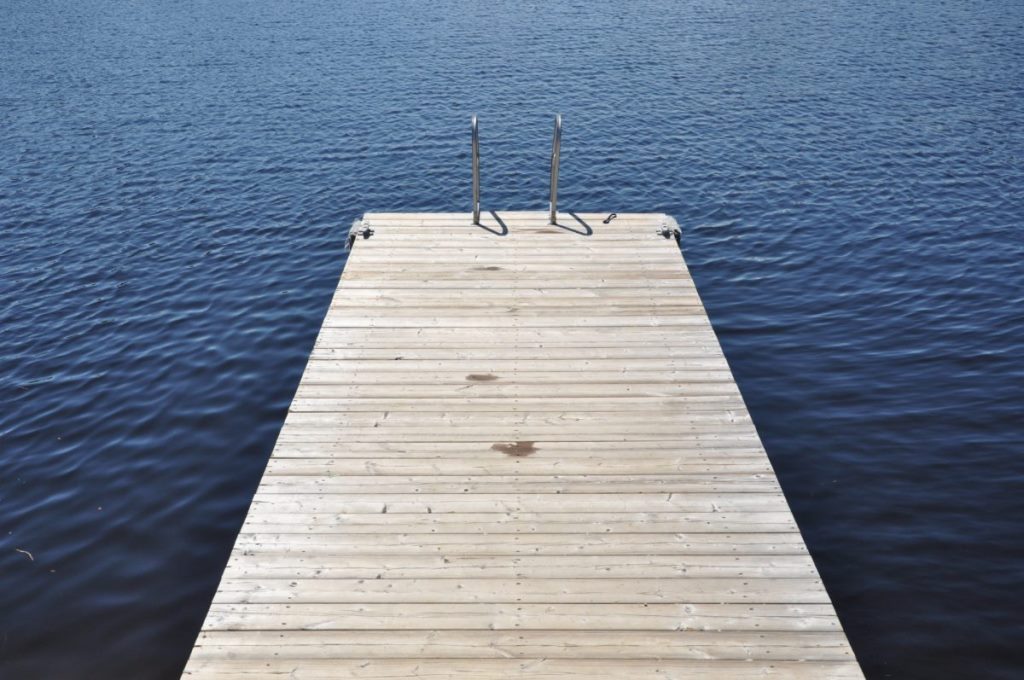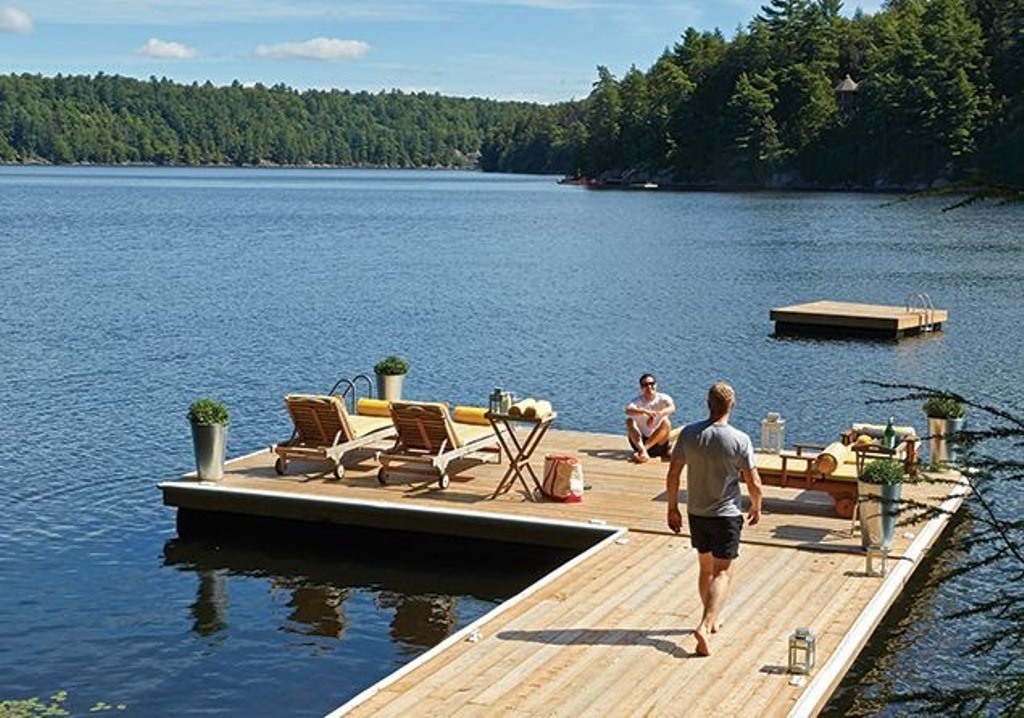A docking system is an important addition to your home if you own a small boat or any type of watercraft. In choosing the ideal docking method for your property, you must pay proper attention to the type of dock, the precise structure of your shoreline, and the kind of waterway that you will be using. These factors take part in defining what ramp and dock system you should obtain. The essential thing is building a durable and well-designed dock.
Anchoring is one of the essential parts in setting up a dock. Yet, ironically, it is the most overlooked section. One should know that anchoring the dock is an additional investment to your property. Keep on reading this article for we will general suggestions on how to anchor a dock plan.
Anchoring Fixed and Floating Docks
- Floating Docks

A floating plastic dock method designed for residential application.
A floating dock system requires an anchoring method every ±30 feet. Anchoring chainplates should be installed in all places you plan on anchoring. To install the anchoring weights, place them on the floating dock and assemble the appropriate volume of loads. It would be best to place a piece of cardboard or wood underneath to protect the dock surface. Then attach the chain, drift the dock over the wanted dropping location, and at that instant – let them sink in the water.
The anchoring weights are the ones that will hold the docks in position because there are no piles, as well as the docks are succumbed to lateral pressures by the waves, wind, and boats.
- Fixed Docks

An easy to install stationary dock with post covers and bench.
Usually, anchoring is not required for stationary docks, unless your property is located where there are large waves that can hit them. Piles being directed into the bottom of the water will guarantee stability. It would be best if you secure any boat with moorings in a manner that will not scrape or hit on the docks. Hence, both the boat and the docks are protected.
If the docks are put up in a shallow area, you install the mooring quickly and easily on a nice day.
Your Selection of Anchoring Blocks
Your trusted concrete products retailer should be able to make arrangements for the necessary weights that will serve as the anchors. Also, your local hardware store surely will have chains in stock. You may look for chains rated as 5/16” galvanized in grade 30. Make sure you follow the local regulations to use the concrete as anchors; if not, replace the material.
Each block should be weighing around 125 pounds shaped in a square with dimensions of ±1x1x1 measured in feet. This is to limit the blocks’ movements once they are on the bottom. A length of chain with a knot or a bolt at the end can be used as a hook.
One should take note of circumstances that may affect the dock system. Therefore you need to adjust accordingly. For example, concrete loses one-third of its weight underwater. Another is there are different kinds of bottom – such as clay (usually offers an excellent anchoring) – that may also affect the capacity of the anchor holding.
Anchoring Maintenance
Anchoring chains, quick links, shackles, or any other attaching parts are subject to rust and will typically not last for long. Thus, the entire system applied at dock level and anchoring need a periodical inspection. Periodic revision and replacement, if needed, is better than waiting to have a break and damages.
Every dock should be inspected each month and after every storm, strong waves and winds, or conditions and events in which may have damaged or loosen the dock.
Winterizing Your Dock

- Floating Docks
The floating docks should be removed from the water. Generally, from areas where the ice or other floating objects will be moving or water levels fluctuate. Unhook anchoring chains, attach and tie them together to a long floating rope and let it float. Assure that rope is long enough to retrieve the chains in springtime.
To remove the floating dock section from the water, create a ramp from wooden planks and slide the dock on but make sure to take all other measures in ensuring no damage occurs.
- Fixed Docks
It has always been advised that you remove stationary docks from the water and store properly within your property. This is to avoid the fixed docks from any potential damages. Take out all posts and stack them one over the other on top upside down to prevent fading.
Conclusion
So there you have it! The tips stated above are general suggestions that you can do if you plan on building your dock as a great extension to your property. Nevertheless, there may be some areas that will require different anchoring methods and it would be best to get assistance from the experts for assurance. Find a reliable dock manufacturer and supplier of other accessories and get started!






